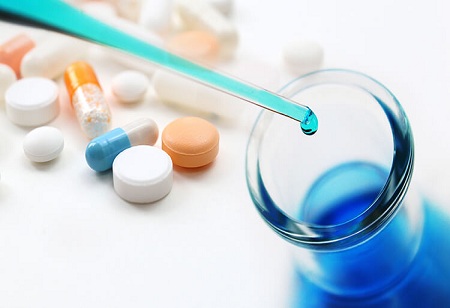In an endeavor to perpetually address India’s dependence on China for
Active Pharmaceutical Ingredients, the Council of Scientific and Industrial Research has begun operating with the coal and petroleum industries to produce the chemicals, which are the main therapeutic components in several
medicines.
A list of 56 APIs has been formulated by the Department of Pharmaceuticals, in order to prioritize those for the Make-in-India program, which includes APIs/bulk drugs, which are used in the manufacturing of essential drugs - anti-HIV medicines, paracetamol & antibiotics.
Significance of APIs
The API is the most important part of any drug since it plays a major role in producing the desired effects. While all drugs consist of 2 core components, the API is the central ingredient of any drug, and the second one which is the excipient is the substances other than the drug which facilitate in delivering the medication to your system.
“If an API is not ultra-pure, medicine cannot meet the strict quality criteria. So the quality of an API plays a very important role,” according to Kastura Chemical.
While manufacturing APIs has conventionally been carried out by the pharmaceutical enterprises on their own in their home countries, of late most of these companies have chosen to send manufacturing overseas intending to reduce costs and this has resulted in paramount changes on how these drugs are being regulated, where numerous meticulous/rigorous guidelines and inspections are introduced.
Determining the product potency
A certain set of standards are being applied by the manufacturers or producers in order to ascertain how strong the API is in each drug, nevertheless, this standard can differ largely from one brand to another since every brand may implement distinct test methods, which will lead to different potencies.
However, in all of these cases, the producers/manufacturers are needed to prove the product potency in both real-life patients as well as in laboratory conditions by the FDA.
An API’s quality is highly important as it delivers a significant effect on not only the efficacy but also the safety of medications. Therefore, either poorly manufactured or compromised APIs have been related to serious health issues, illnesses, or even death.
The Indian pharmaceutical industry is the 3rd largest in terms of volume and 13th largest in terms of value, globally is being bolstered by some of the major factors such as the increasing incidence of chronic disease, & proliferating importance of generics, advancements in API manufacturing, and rapid growth of the biopharmaceutical sector.
Furthermore, with the highest number of US FDA-approved plants, an estimated 665, occupying forty-four percent of global abbreviated new drug applications, the API industry’s growth in the country has been fueled by adopting global standards & establishing large-scale/extensive manufacturing plants in India.
While the Government of India Indian government has initiated numerous schemes intending to promote API (bulk drug) via clusters & Production Linked Incentive programs, these initiatives facilitate and buttress the ‘Make in India’ initiative for domestic manufacturers.
CSIR working on manufacturing 56 APIs in India
The Indian government made announcements regarding the plan for a production-linked incentive scheme for the industry to manufacture a list of 56 API products to prioritize them for the Make-In-India initiative in the month of February. But at present, the main focus of the GOI is on Active Pharmaceutical Ingredients which can be produced using the process of fermentation process instead of generating it using chemical processes that are processed in a laboratory.
And therefore, the spotlight is on the petroleum and coal industries since both of these are mainly into carbon compounds, which form the basis of both organic chemistry as well as drug-making.
“The idea is to do end-to-end production of these 56 APIs but, for now, the priority is on fermentation products. That is why the CSIR is working closely with the department of pharmaceuticals and the coal and petroleum industries,” Dr. Srivari Chandrashekar, director of the Hyderabad-based Indian Institute of Chemical Technology, a constituent lab of the CSIR, told the Print.
“Both deal with carbon compounds and molasses comprising five-six of seven carbon compounds that can be purified and used as APIs. We are hopeful that we would have 10-12 APIs in the coming two to three years. In the first phase, the focus is on about 30 ingredients. The plan to make APIs in India has been in the works for some time but the CSIR was engaged only recently,” he added.
APIs Industry’s progress in India
The APIs industry in India has made a lot of progress since the 1980s. According to a recent report, the Indian API industry is anticipated to reach INR 1307 billion by 2026.
India not only imports APIs from China but also imports the ingredients from numerous other countries, although China is India’s biggest supplier of APIs. During the years 2016-17, for instance, India imported raw materials for its pharmaceutical industry from countries such as Germany, United States, Italy, Singapore, while it purchased Active Pharmaceutical Ingredients that were worth Rs 12000 crore from Germany during 2016-17, India bought APIs from China worth Rs 18000 crore.
However, the value of imports from China has been reduced gradually, over the years. “The making of a drug or any pharmaceutical ingredient is a multi-step process. That is key to this Atmanirbhar programme,” said Dr. Chandrashekar. Furthermore, the Production Linked Incentive scheme is anticipated to promote the manufacturing of high-value products in India, result in the rise of value addition in exports.
“The other thing obviously is at which stage the API is available – it is a little like the difference between instant noodles and traditional noodles. We are working with the industry on that,” Chandrashekar said.
